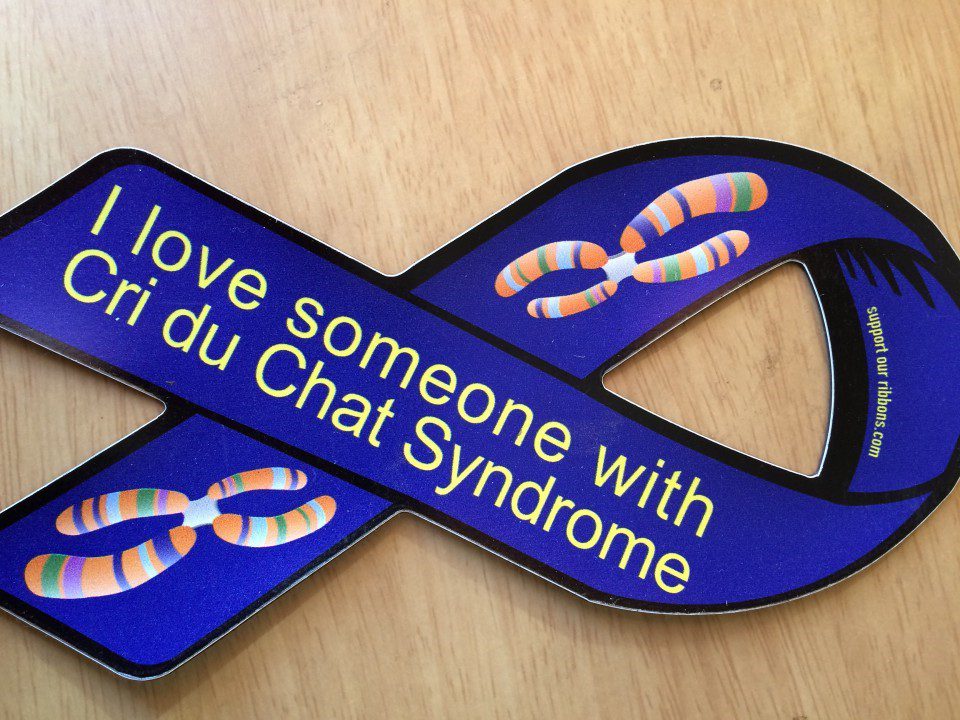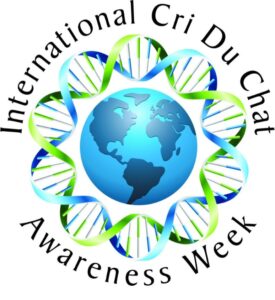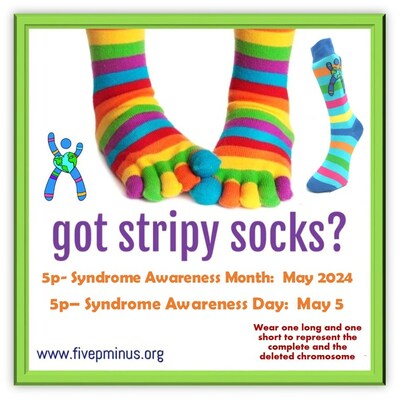Introduction
Overview of International Cri du Chat Awareness Day
International Cri du Chat Awareness Day, observed annually on the 26th of April, serves as a pivotal occasion to raise awareness about Cri du Chat Syndrome (CdCS). This day is not just about understanding a rare genetic condition; it’s a celebration of the families and individuals who navigate its challenges daily.
Cri du Chat Syndrome is characterized by a critical deletion on chromosome 5, and it impacts approximately 1 in 50,000 live births. This awareness day aims to provide:
- Educational Resources: Helping families understand the syndrome better.
- Community Support: Connecting families with shared experiences.
- Advocacy Platforms: Rallying efforts to promote further research.
For many families, sharing personal stories during this day helps normalize conversations around CdCS, creating a supportive network that fosters resilience and hope.

History of Cri du Chat Syndrome
Discovery of Cri du Chat Syndrome
The journey of discovery for Cri du Chat Syndrome dates back to 1963 when Dr. Jérôme Lejeune first identified the condition in a young girl. With her distinct “cat-like” cry, which characterizes the syndrome, Dr. Lejeune began connecting the dots between this unique sound and broader developmental challenges. Families often recount that initial moment of diagnosis with a mix of relief and confusion—a name to the challenges they were facing but also a new uncertainty ahead.
Understanding the Genetic Cause
As research progressed, scientists uncovered that Cri du Chat Syndrome results from a deletion on the short arm of chromosome 5. This genetic anomaly impacts brain development and is linked to various physical and developmental issues.
Key insights into the genetic cause include:
- Chromosomal Deletion: A piece of the chromosome is missing.
- Inheritable but Often Spontaneous: While it can run in families, most cases arise spontaneously.
Understanding this genetic basis has opened doors for more effective advocacy and support for affected individuals and their families, enriching the knowledge pool around Cri du Chat Syndrome.

Signs and Symptoms of Cri du Chat Syndrome
Physical Characteristics
Individuals with Cri du Chat Syndrome often exhibit a range of distinctive physical features that can help guide early diagnosis. Families frequently share that recognizing these characteristics initially raises concerns but ultimately leads to a more profound understanding of their child’s needs. Key physical traits include:
- Cat-like Cry: A high-pitched sound that is often the first noticeable symptom.
- Facial Features: A round face, wide-set eyes, and a small chin.
- Growth Delays: Children may experience slower growth rates and reduced weight compared to their peers.
These visible traits can sometimes connect families through shared experiences, reinforcing the idea that they are not alone on their journey.
Developmental Challenges
Apart from physical attributes, Cri du Chat Syndrome is also associated with various developmental challenges. Families often find that early intervention plays a crucial role in addressing these hurdles. Common challenges include:
- Cognitive Delays: Delayed speech and language development.
- Learning Difficulties: Issues with basic learning skills that require tailored educational approaches.
Recognizing these challenges allows families to seek appropriate support, fostering a nurturing environment for growth and development.

Diagnosis and Treatment
Diagnostic Procedures
Diagnosing Cri du Chat Syndrome typically begins with a physical examination, where pediatricians may identify specific features such as the characteristic cry and facial traits. Families often find themselves in a whirlwind of emotions during this process. Notably, diagnostic procedures that aid in confirming the condition include:
- Chromosomal Analysis: A blood test that examines the number and structure of chromosomes, identifying the deletion on chromosome 5.
- Genetic Counseling: Professional guidance helps families understand the implications of the diagnosis, including potential risks for future pregnancies.
Families frequently appreciate the clarity that these procedures provide, allowing them to better support their child.
Therapeutic Interventions
Once diagnosed, a range of therapeutic interventions can significantly enhance quality of life. Treatments are tailored to address individual needs. Common therapeutic strategies include:
- Speech and Language Therapy: Facilitating communication skills.
- Occupational Therapy: Helping with daily living skills and fine motor development.
- Physical Therapy: Enhancing strength and mobility.
These interventions empower families to navigate the complexities of Cri du Chat Syndrome, offering hope for a brighter future.

Support and Resources for Individuals with Cri du Chat Syndrome
Supportive Care
Navigating the journey of Cri du Chat Syndrome can be daunting, but supportive care makes a tremendous difference. Many families discover comfort in connecting with healthcare professionals who specialize in the syndrome. They provide holistic care that addresses both physical and emotional needs. Supportive care typically includes:
- Tailored Educational Plans: Collaborating with schools to adapt learning environments.
- Counseling Services: Helping families cope emotionally and develop resilience.
- Parent Support Groups: Offering a place for shared experiences and advice.
Families often express gratitude for these resources, feeling more empowered and less isolated.
Advocacy Organizations
Numerous advocacy organizations work diligently to raise awareness and provide resources for those affected by Cri du Chat Syndrome. For example:
- Cri du Chat Network: Provides information and facilitates community support.
- National Organization for Rare Disorders (NORD): Offers resources for advocacy and research funding.
These organizations play a vital role in amplifying the voices of families and ensuring that Cri du Chat Syndrome receives the attention it deserves, fostering a sense of community and hope.

Raising Awareness on International Cri du Chat Awareness Day
Global Initiatives
International Cri du Chat Awareness Day is more than a date on the calendar; it represents a global movement aiming to bring visibility to Cri du Chat Syndrome. Organizations and communities worldwide engage in various initiatives, creating a powerful impact. Some key activities include:
- Social Media Campaigns: Spreading awareness through dedicated hashtags and sharing personal stories.
- Educational Workshops: Hosting events that inform families about the syndrome and encourage discussions.
- Fundraising Events: Organizing walks, runs, or online fundraisers to support research and support groups.
These initiatives have proven essential in fostering a sense of community and reducing stigma associated with the syndrome.
How to Get Involved
Getting involved in International Cri du Chat Awareness Day can be as simple as raising your voice in your local community or online. Here’s how:
- Share Your Story: Personal narratives help others connect with the cause.
- Participate or Organize Events: Joining or creating local awareness events can amplify the message.
- Donate or Fundraise: Contributions to advocacy organizations support ongoing research and resources.
Every action, big or small, helps raise awareness and inspires hope for families affected by Cri du Chat Syndrome.

Personal Stories and Community Impact
Family Experiences
Personal stories from families affected by Cri du Chat Syndrome truly highlight the daily triumphs and challenges experienced. Many parents recount their initial feelings of uncertainty and isolation. For instance, one mother’s journey began with her daughter’s diagnosis, which initially filled her with fear. However, she found solace in connecting with other families, sharing experiences, and celebrating milestones, such as a child’s first words or successful therapy sessions. Key insights from families include:
- Building Community: Finding support networks locally and online made a difference.
- Celebrating Small Wins: Each achievement, no matter how minor, is a cause for celebration.
These experiences underline the strength found in shared journeys and mutual support.
Advocacy Success Stories
Advocacy efforts surrounding Cri du Chat Syndrome have also led to remarkable success stories. Organizations raising awareness have spearheaded initiatives that not only inform the public but lead to tangible outcomes. Examples include:
- Increased Research Funding: Successful campaigns that have directed more resources towards studying Cri du Chat Syndrome.
- Legislation Changes: Advocates working with lawmakers to improve educational and health services for affected individuals.
These success stories reflect a growing recognition of Cri du Chat Syndrome, highlighting how community-driven advocacy can spark meaningful change and support families in navigating their journey.

